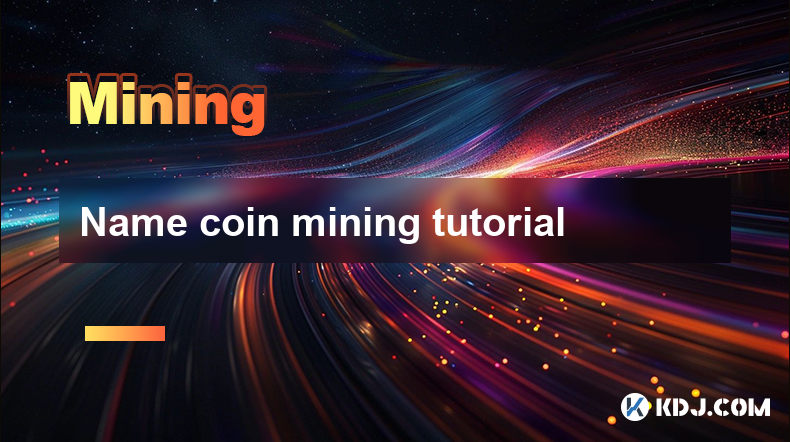-
 Bitcoin
Bitcoin $106,437.2012
0.82% -
 Ethereum
Ethereum $2,442.5287
0.82% -
 Tether USDt
Tether USDt $1.0005
-0.02% -
 XRP
XRP $2.1812
-0.27% -
 BNB
BNB $645.1327
0.45% -
 Solana
Solana $146.2379
0.39% -
 USDC
USDC $0.9999
-0.01% -
 TRON
TRON $0.2751
0.92% -
 Dogecoin
Dogecoin $0.1662
-0.23% -
 Cardano
Cardano $0.5827
-1.22% -
 Hyperliquid
Hyperliquid $37.5225
0.04% -
 Bitcoin Cash
Bitcoin Cash $479.0877
4.02% -
 Sui
Sui $2.7846
-3.27% -
 Chainlink
Chainlink $13.3576
0.84% -
 UNUS SED LEO
UNUS SED LEO $9.0252
-1.20% -
 Stellar
Stellar $0.2455
-1.07% -
 Avalanche
Avalanche $18.0680
-1.81% -
 Toncoin
Toncoin $2.8948
-1.07% -
 Shiba Inu
Shiba Inu $0.0...01164
-1.65% -
 Litecoin
Litecoin $85.0637
-0.06% -
 Hedera
Hedera $0.1526
-0.89% -
 Monero
Monero $316.2941
0.78% -
 Ethena USDe
Ethena USDe $1.0003
-0.04% -
 Polkadot
Polkadot $3.4113
-1.87% -
 Dai
Dai $1.0000
-0.01% -
 Bitget Token
Bitget Token $4.4488
5.16% -
 Uniswap
Uniswap $7.1740
3.09% -
 Pi
Pi $0.5968
11.43% -
 Pepe
Pepe $0.0...01010
-0.65% -
 Aave
Aave $264.3189
0.40%
Name coin mining tutorial
Successful cryptocurrency mining requires choosing a profitable coin, selecting appropriate hardware and software, optimizing the mining rig, and continuously monitoring and adjusting the operation for maximum profitability.
Jan 11, 2025 at 01:29 am

Coin Mining Tutorial
Key Points:
- Selecting a cryptocurrency with a profitable mining potential
- Choosing the right mining hardware and software
- Setting up your mining rig
- Joining a mining pool (optional)
- Monitoring and optimizing your mining operation
Step 1: Choose a Coin with Profitable Mining Potential
The profitability of mining a particular cryptocurrency depends on several factors, including its market value, network difficulty, and block reward. Research different coins to identify those with the highest potential for profitability. Consider the following factors:
- Market value: The higher the market value, the more profitable mining can be.
- Network difficulty: The more miners competing to solve blocks, the higher the difficulty. Higher difficulty means lower profitability.
- Block reward: The amount of cryptocurrency awarded for solving a block. Coins with higher block rewards are more profitable to mine.
Step 2: Select Mining Hardware
Mining hardware, also known as ASICs (Application-Specific Integrated Circuits), is specialized equipment designed for mining cryptocurrencies. Choose hardware that is compatible with the coin you intend to mine and has sufficient hash rate, which determines its processing power. Consider the following:
- Hashrate: Measured in hashes per second (H/s), it indicates the hardware's mining power. Higher hashrate means more potential profits.
- Power consumption: ASICs consume a significant amount of electricity. Calculate the cost of electricity before investing in hardware.
- Price: ASICs can be expensive, so factor in the cost of hardware when estimating profitability.
Step 3: Choose Mining Software
Mining software connects your hardware to the cryptocurrency network. It controls the mining process and communicates with the blockchain. Different mining software is optimized for specific coins and hardware, so choose software that is compatible with your setup. Consider the following:
- Compatibility: Ensure the software supports the coin you intend to mine and your mining hardware.
- Features: Different software offer various features, such as monitoring tools, automatic configuration, and support for mining pools.
- Cost: Some mining software may have associated costs, such as licensing fees or subscription plans.
Step 4: Set Up Your Mining Rig
Once you have chosen your hardware and software, set up your mining rig. This involves physically connecting the hardware, installing the software, and configuring the settings. Consider the following:
- Ventilation: ASICs produce heat, so provide adequate ventilation to prevent overheating.
- Power supply: Ensure your rig has a stable power supply. Consider using uninterruptible power supply (UPS) to protect against power outages.
- Configuration: Set up your mining software to connect to the appropriate mining pool and calibrate your hardware for optimal performance.
Step 5: Join a Mining Pool (Optional)
Mining pools combine the computing power of multiple miners to increase their chances of solving blocks and earning rewards. Joining a mining pool is optional, but it can improve profitability, especially for miners with limited hash rate. Consider the following:
- Pool fees: Mining pools typically charge fees for their services. Choose a pool with competitive fees.
- Pool size: Larger pools have higher chances of finding blocks but may distribute rewards among more miners.
- Reputation: Research the pool's reputation, uptime, and reliability before joining.
Step 6: Monitor and Optimize Your Mining Operation
Once your mining rig is up and running, monitor its performance regularly. Observe the hash rate, power consumption, and profitability. Make necessary adjustments to optimize your operation and maximize earnings. Consider the following:
- Temperature monitoring: Overheating can damage your hardware. Monitor the temperatures and adjust ventilation or cooling systems as needed.
- Software updates: Keep your mining software up to date to ensure compatibility, stability, and potential performance improvements.
- Pool performance: Evaluate the performance of your mining pool and consider switching to a different pool if necessary.
FAQs
Q: What is the most profitable cryptocurrency to mine?
A: The profitability of mining a cryptocurrency depends on market conditions and network difficulty. Conduct research to identify the most profitable coins at the time of mining.
Q: Which mining hardware is best for beginners?
A: Start with entry-level ASICs with lower hash rate and power consumption. Consider hardware that is compatible with multiple coins to provide flexibility in mining options.
Q: Can I mine cryptocurrency with my home computer?
A: While possible, mining with a home computer is not recommended due to low profitability and high energy consumption. ASICs are designed specifically for efficient cryptocurrency mining.
Q: What are the risks of cryptocurrency mining?
A: Crypto currency mining involves volatility risk, hardware failure risk, and potential cybersecurity risks. Conduct thorough research and exercise caution to mitigate these risks.
Q: How long does it take to mine a block?
A: Block mining time varies depending on the cryptocurrency, network difficulty, and miner's hash rate. It can take seconds, minutes, or even days to mine a block.
Disclaimer:info@kdj.com
The information provided is not trading advice. kdj.com does not assume any responsibility for any investments made based on the information provided in this article. Cryptocurrencies are highly volatile and it is highly recommended that you invest with caution after thorough research!
If you believe that the content used on this website infringes your copyright, please contact us immediately (info@kdj.com) and we will delete it promptly.
- Ripple, Bitcoin, and Crypto History: Unearthing the Roots of Digital Finance
- 2025-06-25 20:25:12
- XRP Price ATH Breakout: Will XRP Hit $7 or Even $27?
- 2025-06-25 20:25:12
- BTC/USD Bull Run: Navigating Cryptocurrency's Geopolitical Tides and Meme Coin Mania
- 2025-06-25 20:30:12
- Dogecoin's Crossroads: Buy Signal or Risky Business?
- 2025-06-25 18:25:12
- Aptos (APT) Price Rally: Bulls Eyeing $7 After Bullish Breakout
- 2025-06-25 18:45:12
- Mastercard, Chainlink, and Bitcoin: A New York Minute on the Future of Finance
- 2025-06-25 19:05:12
Related knowledge

What is liquidity mining in DeFi? How to participate and calculate the income?
Jun 20,2025 at 03:21pm
Understanding Liquidity Mining in DeFiLiquidity mining is a core concept in the decentralized finance (DeFi) ecosystem that allows users to earn rewards by providing liquidity to decentralized exchanges (DEXs) or lending platforms. In traditional finance, liquidity providers are usually institutional players, but DeFi democratizes this process, enabling...

What is the mining mechanism of digital currency? What hardware and cost investment are required?
Jun 23,2025 at 06:29am
Understanding the Mining Mechanism of Digital CurrencyThe mining mechanism of digital currency is a foundational process that ensures transaction validation and network security. In most Proof-of-Work (PoW) cryptocurrencies like Bitcoin, miners compete to solve complex mathematical puzzles using computational power. The first miner to find a valid solut...

Analysis of hybrid mining protocol: PoW+PoS hybrid profit calculation
Jun 23,2025 at 10:15am
Understanding Hybrid Mining ProtocolsIn the realm of blockchain technology, consensus mechanisms are pivotal in maintaining network integrity and transaction validation. A hybrid mining protocol combines two or more consensus algorithms to achieve a balance between security, decentralization, and energy efficiency. The most commonly adopted hybrid model...

How to operate option mining? Hedging strategy and profit structure
Jun 21,2025 at 03:29pm
What is Option Mining?Option mining refers to a decentralized finance (DeFi) strategy where participants provide liquidity or take specific derivative positions in options protocols to earn rewards. Unlike traditional yield farming, option mining often involves liquidity provision for options markets, allowing users to generate returns through premiums ...

What are the advantages of Layer2 mining? Gas saving and project inventory
Jun 20,2025 at 04:50am
Understanding Layer2 Mining and Its SignificanceLayer2 mining refers to the process of participating in decentralized applications or protocols that operate on top of a primary blockchain (such as Ethereum) using scaling solutions like Optimism, Arbitrum, or zkSync. Unlike traditional mining on Layer1 blockchains, which often involves high computational...

Is contract mining safe? Key points of smart auditing and vulnerability prevention
Jun 19,2025 at 08:08pm
Understanding Contract Mining in the Cryptocurrency SpaceContract mining refers to a method within blockchain ecosystems where users can participate in mining operations through smart contracts. Unlike traditional mining, which requires physical hardware and technical expertise, contract mining allows participants to invest funds into a mining pool or p...

What is liquidity mining in DeFi? How to participate and calculate the income?
Jun 20,2025 at 03:21pm
Understanding Liquidity Mining in DeFiLiquidity mining is a core concept in the decentralized finance (DeFi) ecosystem that allows users to earn rewards by providing liquidity to decentralized exchanges (DEXs) or lending platforms. In traditional finance, liquidity providers are usually institutional players, but DeFi democratizes this process, enabling...

What is the mining mechanism of digital currency? What hardware and cost investment are required?
Jun 23,2025 at 06:29am
Understanding the Mining Mechanism of Digital CurrencyThe mining mechanism of digital currency is a foundational process that ensures transaction validation and network security. In most Proof-of-Work (PoW) cryptocurrencies like Bitcoin, miners compete to solve complex mathematical puzzles using computational power. The first miner to find a valid solut...

Analysis of hybrid mining protocol: PoW+PoS hybrid profit calculation
Jun 23,2025 at 10:15am
Understanding Hybrid Mining ProtocolsIn the realm of blockchain technology, consensus mechanisms are pivotal in maintaining network integrity and transaction validation. A hybrid mining protocol combines two or more consensus algorithms to achieve a balance between security, decentralization, and energy efficiency. The most commonly adopted hybrid model...

How to operate option mining? Hedging strategy and profit structure
Jun 21,2025 at 03:29pm
What is Option Mining?Option mining refers to a decentralized finance (DeFi) strategy where participants provide liquidity or take specific derivative positions in options protocols to earn rewards. Unlike traditional yield farming, option mining often involves liquidity provision for options markets, allowing users to generate returns through premiums ...

What are the advantages of Layer2 mining? Gas saving and project inventory
Jun 20,2025 at 04:50am
Understanding Layer2 Mining and Its SignificanceLayer2 mining refers to the process of participating in decentralized applications or protocols that operate on top of a primary blockchain (such as Ethereum) using scaling solutions like Optimism, Arbitrum, or zkSync. Unlike traditional mining on Layer1 blockchains, which often involves high computational...

Is contract mining safe? Key points of smart auditing and vulnerability prevention
Jun 19,2025 at 08:08pm
Understanding Contract Mining in the Cryptocurrency SpaceContract mining refers to a method within blockchain ecosystems where users can participate in mining operations through smart contracts. Unlike traditional mining, which requires physical hardware and technical expertise, contract mining allows participants to invest funds into a mining pool or p...
See all articles
























































































